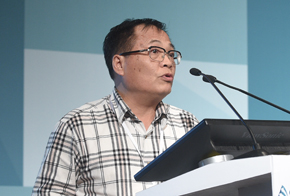Rubber Price to Rise Further in 2017: Zheng Wenrong
Zheng Wenrong, secretary general of China Natural Rubber Association, answered the widely concerned questions about the natural rubber’s output, demand and price in the future at the teleconference of national natural rubber industry.

Rubber Output Won’t Grow Much
Media: Rubber output has been affected by rubber tappers’ enthusiasm for production and additional rubber tapping areas. How global rubber output will change in 2017?
Zheng: Statistics show that in 2016, global rubber output was 11.6 million tons, and the consumption volume was 12.5 million tons, slightly more than the output.
In 2017, global rubber output will not exceed 12 million tons even under full capacity.
First, although the tapping area has increased, it needs labors to tap the rubber trees. Currently, the labor cost in China has grown from 10 yuan/kg to 12 yuan/kg, and there are few people want to do the job.
Secondly, when a rubber tree is tapped for the first time, its output in the first year is low, equivalent to only about 60% of large mature rubber tree’s. The output of a rubber tree won’t return to normal until five to six years later.
Demands for Rubber Continue to Increase
Media: What do you say about the demand for natural rubber in 2017?
Zheng: The consumption demand for natural rubber in 2017 will reach 12.6 million tons at least, or even more.
First, at the end of 2016, the primary reason for greater rubber demand is the surge in demands for heavy-duty tires (bus and truck tires). In the first half of 2017, the demand for heavy-duty tires will not decline.
Secondly, China’s de-capacity policy has come to an end and the factories will come back to ordinary production. The mines will be developed and conveyor belts will be needed. The natural rubber content in a conveyor belt is over 80%, the consumption of rubber is huge.
Thirdly, an increasing number of areas have started to use natural rubbers, such as shock absorbers and military equipment.
Rubber Price to Rise Further
Media: Some Analysts reckon that the bottom of natural rubber price has been built. What’s your opinion about the future price of rubber?
Zheng: The bottom price should be the production cost.
Once the rubber price falls below the cost, producers’ enthusiasm will be hurt, and they may give up tapping. On the contrary, if the price is higher than the production cost, the profit margin is large, and the producers will be encouraged.
The producers of natural rubber in China include private producers, state-owned land-reclamation enterprises and others.
Among them, the state-owned land-reclamation enterprises and other enterprises have to hire people to tap the rubber trees, so they should pay the social insurances and public accumulation funds for the employees, and their production cost is between 18,000 to 20,000 yuan per ton; while private producers sell their own products without having to pay the insurances and funds, so their cost is lower, at about 15,000 yuan per ton.
Therefore, rubber prices of the state-owned land-reclamation enterprises and others are more representative, and 18,000 to 20,000 yuan per ton is the bottom price of rubber.
I believe that as long as rubber price hasn’t fell to the cost line, it has potential to rise. Even the rubber price won’t reach 20,000 yuan per ton in the next year, the growing momentum is for certain.
- Tireworld Insight: Domestic tire makers eye overseas expansion
- Tireworld Insight: Price disparity severe between China's rubber exports and imports
- Tireworld Insight: China tire exports dependent on US market performance
- Tireworld Insight: SHFE rubber expected to move in tight range in short-term
- Tireworld Insight: Rubber futures to test near-term resistance at 15,000 yuan/tonne
- Tireworld Insight: China’s tire industry on track of rapid growth






